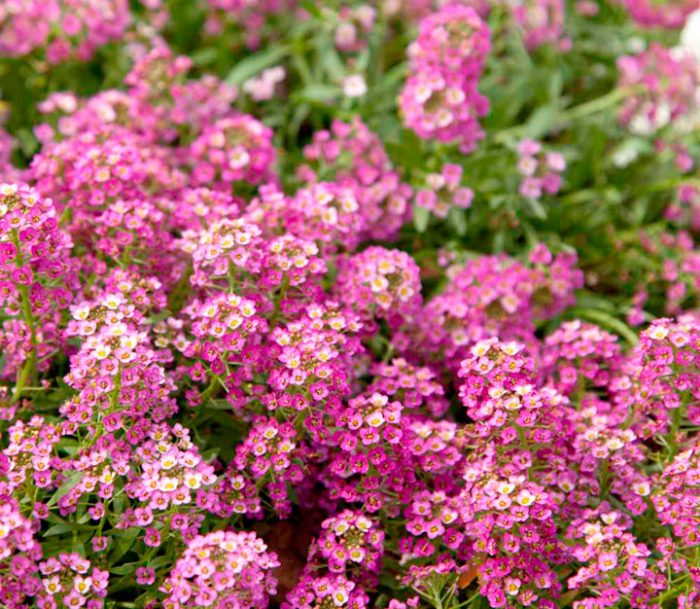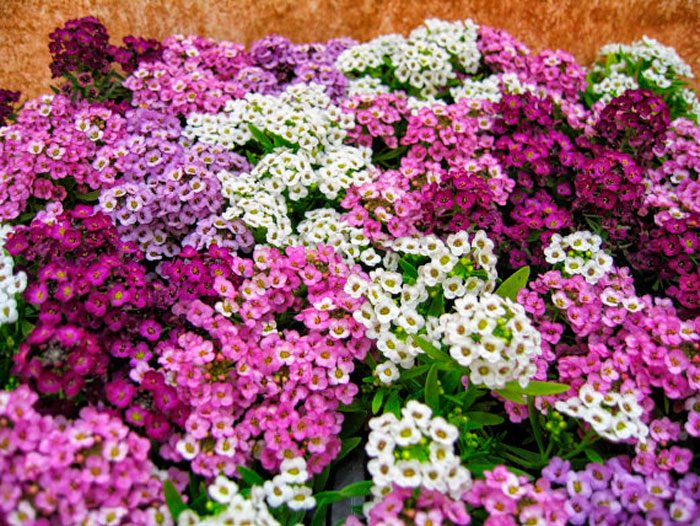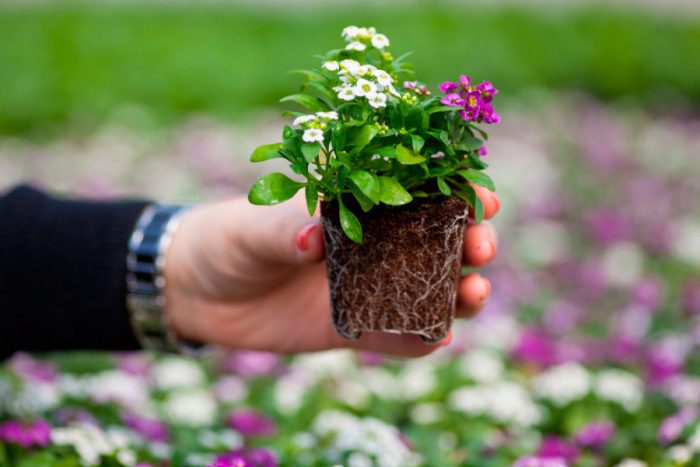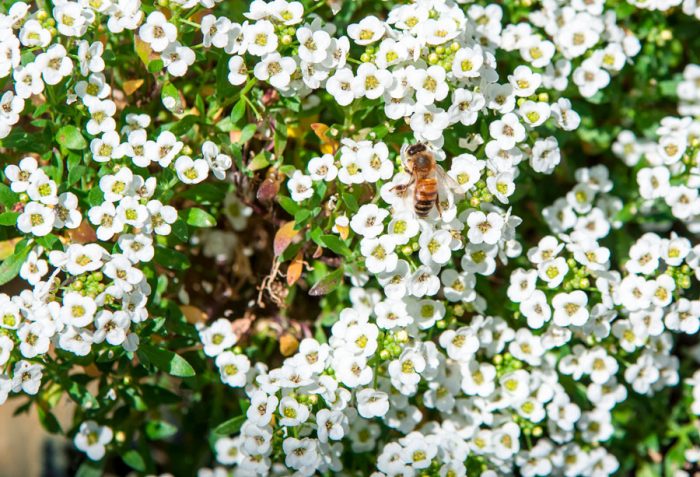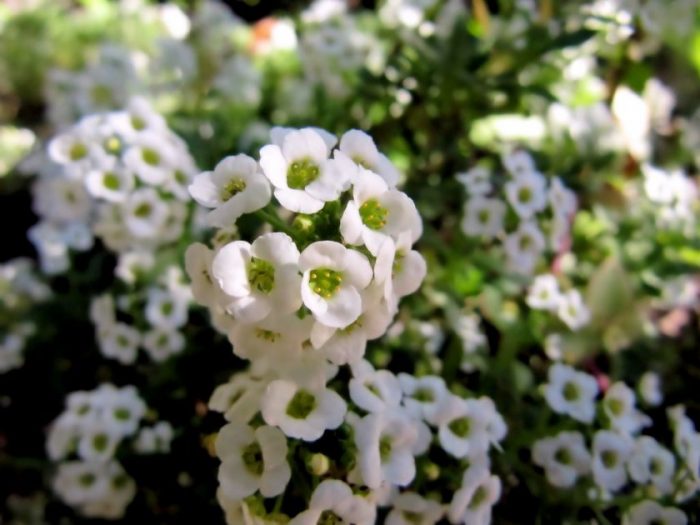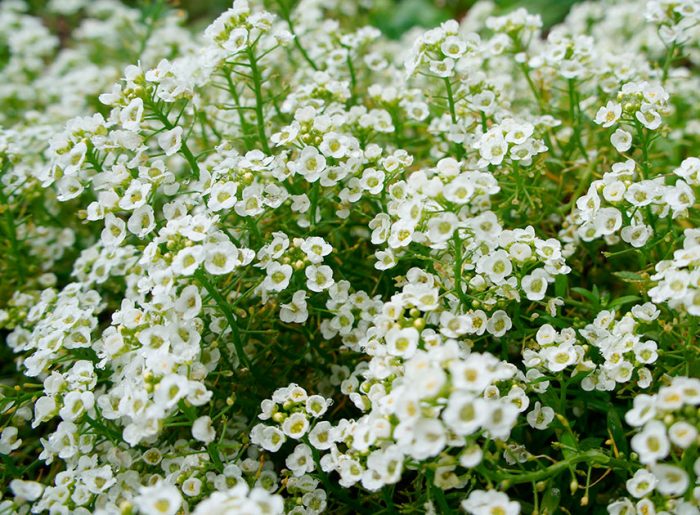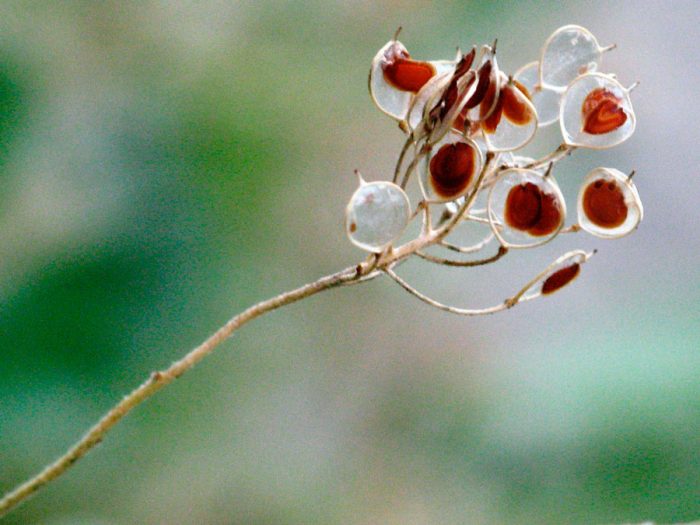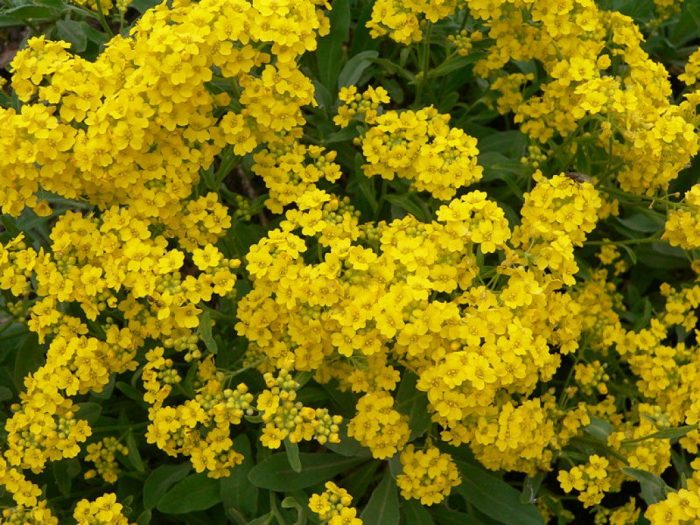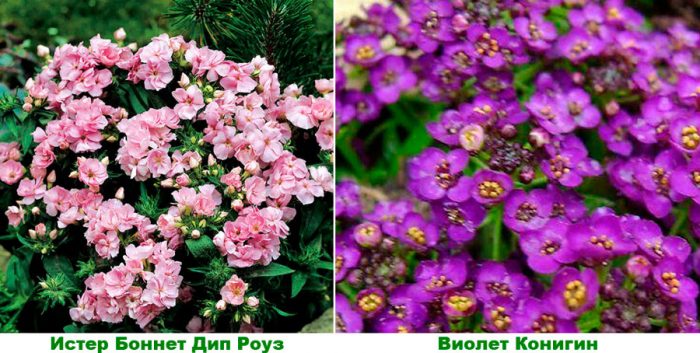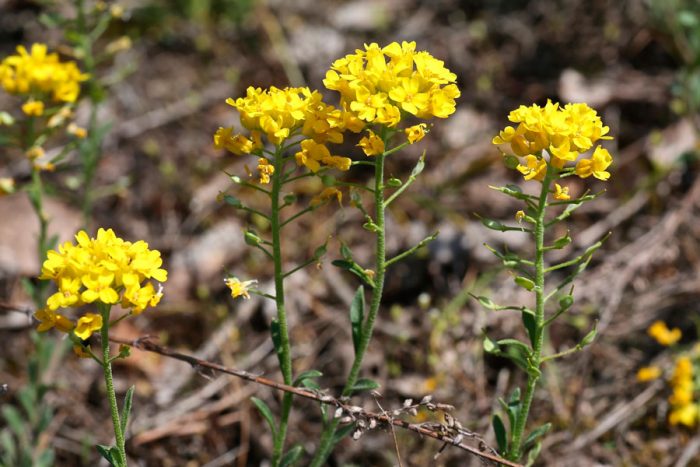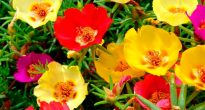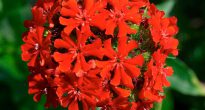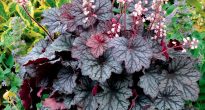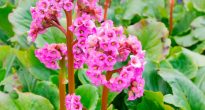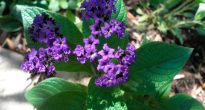Alyssum (Alyssum), also called sea lobularia, or beetroot, is a genus that is part of the Cabbage family (formerly Crucifers). This genus includes about 100 different species. In nature, such plants can be found in Asia, North Africa and Europe. The word "alissum" itself is a Latinization of the Greek word "alisson", where "a" is translated as "without" (negation), and "lyssa" means "canine rabies". There is an assumption that this plant in ancient times was used in the treatment of rabies in dogs. Gardeners began to cultivate alyssum relatively recently, but it is becoming more and more popular from year to year. This is due to the fact that the flower is very easy to care for, and it also has a very strong honey scent.
Content
Features of alissum
The height of the undersized ground cover plant alissum can vary from 0.15 to 0.4 m. Strongly branching stems are semi-lignified at the base. Small leaf plates obovate or oblong have pubescence on the surface. Small racemose inflorescences consist of small flowers that can be colored yellow, pink, purple, white, lilac or red. Flowering begins in May and ends in late autumn. The fruit is a pod with seeds inside, they remain viable for 3 years. This plant is a good honey plant, which has a spicy honey smell that attracts bees.
You should know that alyssum and sea lobularia are different plants that are closest relatives. However, they are so similar to each other that gardeners, for simplicity, refer them to the same genus. These plants differ in color of flowers: in lobularia they are lilac, white or pink, and in alissum - yellow or fawn.
Alyssum is cultivated by flower growers both as a perennial and as an annual. It is grown in flower beds, in flower beds and flowerpots. It is often used to fill areas of spring bulbous plants that are empty after flowering.
Growing alissum from seeds
Sowing
You can grow alyssum from seeds in a seedless and seedling way.If a seedless growing method was chosen, then sowing seeds in open soil should be done in the first days of May. They are buried in the soil only 15 mm. After the seedlings appear as a solid carpet, they will need to be thinned out. If sowing was carried out in spring, then flowering will be late. Sowing can be done before winter, in the cold season, the seeds will be able to undergo natural stratification, and then friendly shoots will appear in the spring, while the senses will be relatively strong and their flowering will begin in a timely manner.
Seedling care
However, most gardeners prefer to grow alissum through seedlings, because this method is distinguished by its reliability. Sowing seeds for seedlings is carried out in March or April. The boxes should be filled with a nutritious light medium containing a little lime (pH 5.5-6.2). The seeds are evenly distributed over the surface of the substrate, not very densely, then they are slightly pressed into the surface or sprinkled with a thin layer of the substrate. The containers must be rearranged in a well-lit place, having previously covered them with film or glass. The optimum temperature should be between 10 and 15 degrees. Crops should be moderately moistened and ventilated regularly. If everything is done correctly, the first seedlings will appear after 7 days or earlier.
Immediately after the seedlings begin to form the first true leaf plate, they should be fed with complex fertilizer. It will be possible to cut the seedlings into individual cups only after the plants have 2 or 3 true leaf plates. However, if the seedlings grow very quickly, then you do not need to dive them, when the time comes, they are immediately planted in open soil.
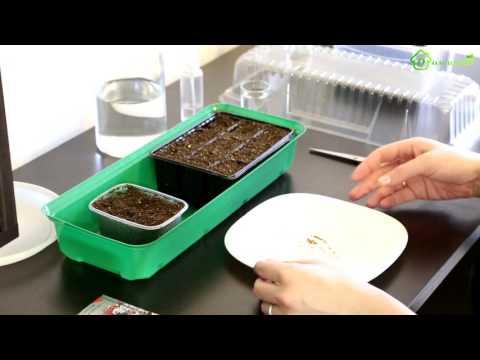

Watch this video on YouTube
Planting alyssum in open ground
What time to plant
It is possible to plant alyssum seedlings in open soil in the last days of May or in the first days of June; it should be noted that return spring frosts should be left behind. The site must be well lit. Dry, well-drained neutral soil, saturated with humus, is best suited for planting. Slightly acidic or slightly alkaline soil is also suitable for planting. This plant grows well between stones or slabs that are heated by the sun.
Landing features
When planning to plant seedlings in open soil, one should take into account the fact that this plant grows rather quickly in breadth. In this regard, when planting between the bushes, a distance of about 0.4 m should be observed. Although the distance between plants should be significantly influenced by their type and variety. The size of the planting hole should be such that the root system of the plant, taken together with the earthen lump, can freely fit in it. The planted flowers should not be deeply buried. The planted plants need abundant watering. If the bushes have grown a lot, then during planting in open ground they can be divided, and the cuttings are planted as independent plants. Alyssum grown from seed begins to bloom 6-7 weeks after the seedlings appear.


Watch this video on YouTube
Alyssum care
Alyssum grown in the garden is very easy to care for. Such a plant must be watered, weeded, fed, cut in a timely manner, and the surface of the soil should also be loosened regularly. Watering such a flower should be systematic, while watering should be abundant during a prolonged drought. It should be remembered that if the plant lacks moisture, then it can throw off both the buds and the opened flowers. However, it is possible to water the plant abundantly only if the soil passes water well. If stagnation of liquid is observed in the soil, then the bushes will get wet and die.To understand whether watering is required for Alyssum, you need to dig the soil to a depth of 30–40 mm with a shovel. If the soil there is dry, it means that these flowers must be watered. When watering is finished, it is recommended to remove all weeds from the site, and also to loosen its surface between the bushes. To significantly reduce the number of weeding and watering, in the spring after planting, the surface of the site should be sprinkled with a layer of mulch. But it should be borne in mind that even if the site is mulched, its surface still needs to be systematically loosened, since this procedure improves the air and water permeability of the soil, and therefore it is very important when growing this flower crop.
Alyssum, which is a perennial, must be fertilized during the growth of green mass; for this, fertilizers containing nitrogen are used. To prepare a nutrient solution for 1 bucket of water, take 1 large spoonful of urea and Agricola-7. Before flowering begins, the plant needs to be fed with complex fertilizer, which must be applied to the soil. Annuals need frequent feeding, so during the season they are fed 4 times, while the first fertilization is done shortly before the alissum blooms. If you feed annuals correctly and on time, they will delight the gardener with lush flowering.
Pruning alyssum
In order for the alyssum to develop correctly and bloom magnificently, it must be cut in a timely manner and correctly. In spring, it is necessary to cut off all dried foliage from perennials, peduncles left over from last year, as well as weak and diseased stems. When summer flowering is over, it is necessary to repeat the pruning procedure, and then shorten all the stems by 50–80 mm, this will provoke repeated flowering. In addition, the bushes after pruning look more compact and well-groomed.
Diseases and pests
The cruciferous flea is the most dangerous for this culture, because it is quite difficult to get rid of it. Affected bushes should be sprayed with a solution of vinegar essence (1 large spoon for 1 bucket of water), however, only adults, sufficiently powerful specimens can withstand such treatment.
Caterpillars can also harm flowers. To get rid of them, alyssums are sprayed with infusion of tobacco with soap or chamomile. Whites and cabbage moths can also harm the plant; to get rid of them, use lepidocide or entobacterin.
If the soil has insufficient water permeability, as well as with constant stagnation of liquid in the soil, the plant develops late blight (brown rot), which affects the root system and the root collar of the bush. It is recommended to spray the affected plant with copper oxychloride or fungicidal preparations (Thanos, Ordan or Kuproksat).
Also, the plant can get sick with false or powdery mildew, as well as a viral mosaic. To get rid of powdery mildew, the bush is sprayed with Topaz or Bordeaux mixture, and in the fight against downy mildew they use Ordan, Oxykhom or Bordeaux liquid. The viral mosaic is currently not amenable to treatment.
Alissum after flowering
Seed collection
You need to collect seeds in the last days of September or the first ones in October. Choose a dry day with no wind. It is necessary to spread the fabric right on the ground, and then they take the inflorescences in their hands and carefully rub them. When you're done, remove any large debris, but leave small ones. To dry the seeds, they are placed in a dry room with very good ventilation, but there should be no drafts. Seeds should be poured into a cloth bag and stored until spring. If the seeds have already spilled out onto the ground, then in this case it is necessary to carefully sweep them out with a broom from under the bushes. Once the debris has been removed, the seeds should be stored in the same way as described above.
Perennial wintering
Alyssum has an average winter hardiness, so if the air temperature drops less than minus 15 degrees, the plant will die. However, in regions with fairly mild winters, this flower, if properly prepared, can survive the colder months. In late autumn, the site should be covered with dried foliage. After the snow falls, a snowdrift should be thrown over the foliage. If you cover the alissums in this way, they will be able to survive the winter, while the green foliage will remain on the bush. It is not recommended to prune the plant before winter; a haircut is arranged in spring.
Types and varieties of alyssum with photos and names
Alyssum rocky (Alyssum saxatile)
This highly branched perennial plant can reach a height of about 0.3 m. The bushes have a hemispherical shape, and in diameter they reach about 0.4 m. At the base, branchy shoots are lignified. Dense rosettes consist of oblong or obovate leaf plates of a bluish color, outwardly they look like felt. They remain on the plant even in winter. Short, fluffy racemose inflorescences are composed of small yellow flowers that have notched petals. Flowering occurs in the spring and lasts approximately 5.5 weeks. Re-flowering is possible in the last summer weeks. Varieties:
- Citrinum... On a low bush are yellow-lemon flowers.
- Compactum... The height of the bush is about 18 centimeters, the small flowers are very fragrant.
- Golden wave... The height of the bush is about 0.2 m. This variety begins to bloom only at the age of two. The flowers are yellow.
- The plenum... On a bush about 0.3 m high, double golden flowers bloom.
Alyssum sea (Alyssum maritimum), or sea lobularia
In regions with a warm climate, such a plant is grown as a perennial. Its height can vary from 0.08 to 0.4 m. It has a large number of branches creeping along the surface of the site, as a result of which dense bushes are formed. Fleshy small leafy plates of oval shape and silvery color have small pubescence on the surface. The racemose inflorescences consist of small flowers with a honey smell. In the wild, varieties with lilac and white flowers can be found. However, there are many varieties in culture, the flowers of which can be colored purple, pink or red. This kind blooms from spring to autumn. Varieties:
- Tiny Tim... This dwarf plant reaches a height of 80 mm. The flowering is lush, there are very, very many white flowers, because of them it is even impossible to see any shoots or foliage. It is used as a ground cover plant.
- Easter Bonnet Deep Rose... Lush flowering, deep pink flowers.
- Princess in Pearl... This ampelous variety is recommended to be grown in flowerpots or hanging pots. In length, spreading stems can reach 0.35 m. Pale lilac flowers are very fragrant.
- Violet Konigin... Densely branched compact bush reaches a height of 10 to 15 centimeters. The flowers are purple.
Alyssum Gmelin, or mountain alissum (Alyssum gmelinii, or Alyssum montanum)
This perennial plant is frost-resistant. Its height can vary from 0.1 to 0.2 m. Shoots are creeping and ascending. On the surface of the leaf plates there is a dense pubescence, consisting of stellate hairs, because of it it seems that the foliage is painted in gray. The racemose inflorescences consist of yellow flowers. Flowering begins in April or May.
There are also the following types of alissums: Lena, winding, Savran, rough, cup, Pyrenean, creeping and silver.
In recent years, thanks to breeders, a large number of Alyssum varieties have appeared, the most popular of which are the following:
- Palette... The height of miniature plants does not exceed 10 cm. Flowers can be painted in a variety of colors: pink, raspberry, brown, white, red and lilac.At the flower shop, you can buy a mixture of Alyssum Palette seeds, from which bushes with flowers of various colors grow, making it easy to create a colorful carpet in the garden.
- Big Jam... This large-flowered variety has 1.5 times more flowers than ordinary species. They can be painted purple, pale lilac, lavender and white. The height of the bushes is about 0.35 m. The variety is frost and drought resistant, it blooms even at minus 3 degrees.
- Gold placer... The bush has a spherical shape. The leaf plates are narrow. The shoots practically lie on the surface of the soil. Small, dense racemose inflorescences are composed of rich yellow flowers. This variety is recommended for growing on rocky hills, as well as for decorating retaining walls.
- White carpet... Long and lush flowering, white flowers. Used as a ground cover plant.
- Pink rug... The height of densely branched bushes is about 12 centimeters. There is pubescence on the surface of small gray leaf plates. The brushes are composed of small lilac-pink fragrant flowers. Often, this variety is used as an ampelous plant for balconies, and also frame flower beds and flower beds with such flowers.
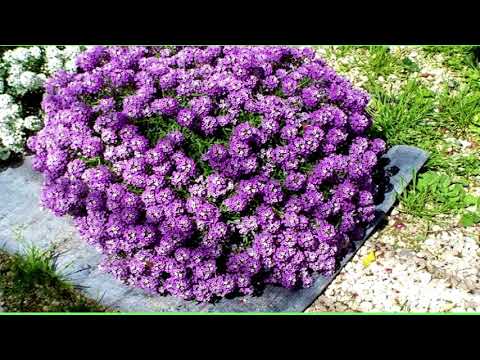

Watch this video on YouTube

